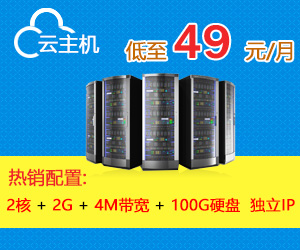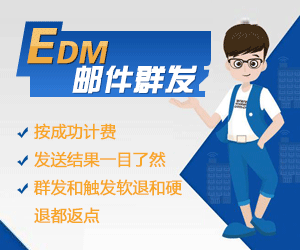websocket在vue2中如何封装使用
这篇文章主要讲解了“websocket在vue2中如何封装使用”,文中的讲解内容简单清晰,易于学习与理解,下面请大家跟着小编的思路慢慢深入,一起来研究和学习“websocket在vue2中如何封装使用”吧!
websocket在vue2中的封装使用
先说需求: 页面中有websocket连接,进入的时候发送参数到后端,后端发送消息, 离开页面时发送参数至后端,后端停止发送消息,不得断开连接, 下一次进入时页面时不用再次连接。
实现思路:
因为是全局连接一个websocket,所以这里采用单例模式
也是因为封装的原因,页面中肯定是直接拿不到onmessage中返回的数据, 所以这里采用发布订阅模式来做
完整代码在最后,不想看我废话的可以直接扒拉了
步骤
步骤就是: 连接,页面发送消息,接收消息,over ~
首先定义连接websocket的方法
export default class SocketService {
constructor(url){
this.url = url
},
connect() {
//判断浏览器是否支持websocket
if (!window.WebSocket) {
return console.log("您的浏览器不支持WebSocket");
}
url,
//连接websocket
this.ws = new WebSocket(this.url);
//监听websocket各种状态
this.ws.onopen = () => {};
this.ws.onclose = () => {};
this.ws.onerror = () => {};
this.ws.onmessage = (e) => {};
}
}我们先让socket连接上叭
export default class SocketService {
constructor(url, againConnect = true){
this.url = url
this.againConnect = againConnect;
},
ws = null; // 和服务端连接的socket对象
url; //地址
againConnect; //标识断开是否重连
connected = false; // 标识是否连接成功
sendRetryCount = 0; // 记录重试的次数
connectRetryCount = 0; // 重新连接尝试的次数
connect() {
//判断浏览器是否支持websocket
if (!window.WebSocket) {
return console.log("您的浏览器不支持WebSocket");
}
url,
//连接websocket
this.ws = new WebSocket(this.url);
//监听websocket各种状态
this.ws.onopen = () => {
//连接上后所有标识清零
this.connected = true;
this.connectRetryCount = 0;
};
this.ws.onclose = () => {
//连接关闭
this.connected = false;
this.connectRetryCount++;
if (this.againConnect) {
//重连
setTimeout(() => {
this.connect();
}, 500 * this.connectRetryCount);
} else {
//不重连的操作
sessionStorage.clear();
localStorage.clear();
message.error("登录超时");
router.push("/");
}
};
this.ws.onerror = () => {
//连接失败
this.connected = false;
this.connectRetryCount++;
if (this.againConnect) {
setTimeout(() => {
this.connect();
}, 500 * this.connectRetryCount);
}
};
this.ws.onmessage = (e) => {
console.log(e)
};
},
unSubscribe() {}
send(){
//发送消息的方法
}
}那么我们要怎么给后端发送消息呢,发送了消息之后我们又该怎样才能在页面中接收到消息呢?
在send方法中接收一个回调函数,
在message中调用,
subscribeList = {}; //记载回调函数
idList = [];
send(data, callback) {
//判断此时有没有ws
if (!this.ws) {
this.connect();
this.send(data, callback);
} else {
// 判断此时此刻有没有连接成功
if (this.connected) {
this.sendRetryCount = 0;
this.ws.send(JSON.stringify(data));
if (data.type === "sub") {
//存储id
this.idList.push(data.id);
//存储回调函数,
if (!this.subscribeList[data.id]) {
this.subscribeList[data.id] = [callback];
} else {
this.subscribeList[data.id].push(callback);
}
}
} else {
this.sendRetryCount++;
setTimeout(() => {
this.send(data, callback);
}, this.sendRetryCount * 500);
}
}
}
connect(){
......
this.ws.onmessage = (e) => {
let { payload, requestId, type } = JSON.parse(e.data);
if (type === "error") {
console.log("出错了");
}
if (this.subscribeList[requestId]) {
if (type === "complete") {
console.log("完成了");
} else if (type === "result") {
this.subscribeList[requestId].forEach((item) =>
item.call(this, payload)
);
}
}
};
}
//销毁回调函数
unSubscribe() {
//停止消息发送
this.idList.forEach((item) => {
this.send({ id: item, type: "unsub" });
delete this.subscribeList[item];
});
this.idList = [];
}sub标识发送消息, unsub标识停止发送消息
id为事件的标识符
现在解决了页面中接收消息的问题,那么怎么保证离开页面,回到页面,使用的是同一个websocket呢,如果实例化这个类的话,那么每次进入都会实例化SocketService,
es6的class中有取值函数和存值函数, 具体使用请看这里:
Class 的基本语法 - ES6 教程 - 网道 (wangdoc.com)
instance = null;
static get Instance() {
if (!this.instance) {
this.instance = new SocketService(false);
}
return this.instance;
}使用getter,来拿取class中的instance,拿取的时候设置拦截该行为,判断instance有没有值,没有值就实例化SocketService给instance,返回instance,
页面中使用方式
import SocketService from "@/websocket/websocket";
mounted() {
this.ws = SocketService.Instance;
this.ws.send(
{
id: "11111",
topic: "/xxx/xxx",
parameter: {},
type: "sub",
},
this.Callback
);
}
destroyed() {
this.ws.unSubscribe();
},
methods:{
Callback(data) {
console.log(data);
},
}在vue中的封装
export default class SocketService {
constructor(againConnect = true, url) {
this.url = url;
this.againConnect = againConnect;
}
instance = null; //页面中使用的SocketService实例
ws = null; // 和服务端连接的socket对象
url; //地址
againConnect; //断开是否重连
connected = false; // 标识是否连接成功
sendRetryCount = 0; // 记录重试的次数
connectRetryCount = 0; // 重新连接尝试的次数
//单例模式保证只有一个SocketService实例
static get Instance() {
if (!this.instance) {
this.url = '......'
this.instance = new SocketService(false, url);
}
return this.instance;
}
// 定义连接服务器的方法
connect() {
// 这里判断你的浏览器支不支持websocket
if (!window.WebSocket) {
return console.log("您的浏览器不支持WebSocket");
}
this.ws = new WebSocket(this.url);
//连接上了
this.ws.onopen = () => {
this.connected = true;
// 重置重新连接的次数
this.connectRetryCount = 0;
};
//连接关闭了,设置标识值为false,
this.ws.onclose = () => {
this.connected = false;
this.connectRetryCount++;
if (this.againConnect) {
setTimeout(() => {
this.connect();
}, 500 * this.connectRetryCount);
} else {
sessionStorage.clear();
localStorage.clear();
message.error("登录超时");
router.push("/");
}
};
this.ws.onerror = () => {
console.log("socket连接失败");
this.connected = false;
this.connectRetryCount++;
if (this.againConnect) {
setTimeout(() => {
this.connect();
}, 500 * this.connectRetryCount);
}
};
this.ws.onmessage = (e) => {
let { payload, requestId } = JSON.parse(e.data);
if (this.subscribeList[requestId]) {
this.subscribeList[requestId].forEach((item) =>
item.call(this, payload)
);
}
};
}
//销毁回调函数
unSubscribe() {
//停止消息发送
this.idList.forEach((item) => {
this.send({ id: item, type: "unsub" });
delete this.subscribeList[item];
});
this.idList = [];
}
subscribeList = {}; //记载回调函数
idList = [];
// 发送数据的方法
send(data, callback) {
//判断此时有没有ws
if (!this.ws) {
this.connect();
this.send(data, callback);
} else {
// 判断此时此刻有没有连接成功
if (this.connected) {
this.sendRetryCount = 0;
this.ws.send(JSON.stringify(data));
if (data.type === "sub") {
//存储id
this.idList.push(data.id);
//存储回调函数,
if (!this.subscribeList[data.id]) {
this.subscribeList[data.id] = [callback];
} else {
this.subscribeList[data.id].push(callback);
}
}
} else {
this.sendRetryCount++;
setTimeout(() => {
this.send(data, callback);
}, this.sendRetryCount * 500);
}
}
}
}相关内容
这些是最新的
热门排行
- THINKPHP5+GatewayWorker+Workerman 开发在线客服系统
- 在手机浏览器网页中点击链接跳转到微信界面的方法
- 尊云网站目录系统 ThinkPHP5网站分类目录程序 v2.2.221011
- CentOS 7安装shadowsock(一键安装脚本)
- AdminTemplate 基于LayUI 2.4.5实现的网站后台管理模板
- 用NW.js(node-webkit)开发多平台的桌面客户端
- PHP生成随机昵称/用户名
- THINKPHP5网站分类目录程序 尊云网站目录系统
- 织梦(DEDECMS)微信支付接口 微信插件
- 基于LayUI开发的 网站后台管理模板 BeginnerAdmin
- 响应式后台网站模板 - AMA.ADMIN
- layuiAdmin后台管理模板 Iframe版
- LayUI 1.0.9 升级 至 LayUI 2.1.4 方法
- 简洁清爽的会员中心模板
- jQuery幸运大转盘抽奖活动代码



